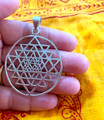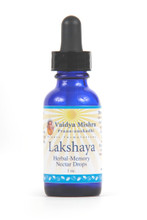 Loading... Please wait...
Loading... Please wait...Categories
- Ashwagandha
- Magnesium
- Turmeric
- Vitamin D
- ASHOKA formulations
- Bone Care
- Creams
- Eyes, Ears, Sinus, Throat
- Immune
- Dosha:Kapha
- Lip balms
- Liver & Kidneys
- Lotions
- Muscles & Joints
- Shampoo & Conditioner
- Pre Biotics and Probiotics
- Stress & Adrenals
- GHEE
- Garcinia
- Protein For Vegans and Vegetarians
- Chutneys & Preserves
- Circulation: Physical and Vibrational
- EVERYTHING ROSE
- Lotions, Creams, & Body Mists
- Shilajit in Formulations
- Guduchi: Transdermal, Transmucosal, & Oral
- Lotions & Body Creams
- Floral Aromas, Incense, Air Freshener, Body Mist
- Ayurvedic Pet Care
- Baby & Children
- Bath, Soaps & Deodorants
- Body Massage Oils
- Cellulite & Skin Care
- Colon Care
- Cooking, Spices, Condiments, & Oils
- DETOX
- Cough & Cold
- Digestion
- ONLINE Courses, Audio, and Printed Materials
- EMF Management
- Emotional Support & Balance
- Eye & Vision
- Fat & Sugar Metabolism
- Gift Baskets
- Hair Care
- Herbal-Memory Nectars
- Herbal Teas/Coffee Substitutes
- Home (Air Fresheners & Laundry)
- Hormonal Modulation for her & for him
- HP Herbal Nectar Drops
- Immunity & Health
- Individual Herbs & Spices
- Lalita’s Skin & Beauty
- Men’s Health & Shaving
- Mind & Mental Stress Support
- Moringa
- Multi-Minerals
- Oral Care - SVADANTA
- Silver Gift Items
- Sinus Care & Nasya (Nasal) Oils
- Sleep
- Stress Management
- SVA Samadhi with Marma
- Tablets and Capsules
- Transdermal Creams
- Tulsi
- Tridoshic Pain Management
- Vit D, B12, Magnesium, ALA, CoQ10
- Travel Sample Sizes & Starter Kits
- Wild Amla & Chyawanprash
- Women's Health
New Products
Our Newsletter
- Home
- Herbal-Memory Nectars
- Lakshaya Herbal Memory Nectar
Product Description
Laksha has been used in Shaka Vansya Ayurveda since ancient times as a means to help heal the nerves and to bind deep toxins in the body.
Laksha is not an herb, but is a resin created when the laccifer lacca (lac beetle) attaches itself to certain trees and sucks the sap. The substance that this insect excretes is called laksha, or lac. It is also known as the raw material for shellac.
The value of this dravya (ayurvedic substance) lies in is its ability to penetrate into the deep tissues of the body (tuvera) and its ability to bind toxins (snigdha). Laksha is also described by Bhava Prakash, one of Ayurveda's Sanskrit source texts, to be cooling (himavalya), or at least anushna (not heating), which is helpful when removing highly acidic toxins that come from the bone marrow and nerve tissues.
The Advantage Of Laksha In Herbal Memory Nectar Form
If you are familiar with Vaidya Mishra's Herbal Memory Nectar formulations, you know that they contain only the sukshma bhag (subtlest fraction) of the herb along with its prabhavas (special vibrational properties). This is especially useful in the case of laksha because it allows for thevibration to very quickly reach the deep tissues of the body.
Whenever you use a physical herb, like lakshaya powder, it must go through the digestive and metabolic processes, which takes time. When the sukshma bhag (subtlest fraction) of the herb is used instead, as in Lakshaya Herbal Memory Nectar, it does not need to be digested. The vibration and micro-molecules of the herb go directly to the places in the body where they are needed without involving the digestive or metabolic systems.
This can be a powerful shortcut when dealing with deep tissue toxins, especially if the digestion and metabolism are sluggish. In fact, it is quite probable that chronic slow digestion (low agni) is associated with deep tissue toxins and, in many cases, it may actually be the root cause of those toxins.
When agni is compromised, as is the case for most people living a modern lifestyle, the effectiveness of herbs like laksha is increased when taken in Herbal Memory Nectar form, as compared to the raw herb.
Laksha Helps Address The Root Cause of Herpes According to Ayurveda
There are many forms and causes of herpes (visarpa in Sanskrit) but, according to Ayurveda, the most common cause is deep toxins coming out of the majja dhatu (bone marrow). These old toxins (amavisha or garavisha) are highly acidic and reactive.
When they come out of the bone marrow they cause a lot of damage to the tissues and nerves, and cause a lot of pain in the process. According to Ayurveda, this sets the stage for a secondary infection by the herpes virus.
According to Ayurveda, killing the virus is not enough. The toxins must also be removed if the symptoms are to be prevented from reoccurring. Lakshaya Herbal Memory Nectar reaches quickly to the bone marrow toxins and begins to pacify and bind the toxins right away.
This is not a substitute for conventional treatment, as the viral infection must also be addressed, but this ancient Ayurvedic herb may be helpful for removing the underlying cause of the symptoms.
Laksha Is Also Helpful For Repairing Damaged Nerves According The Ancient Texts
Bhava Prakash as well as India's great epic, The Mahabharata, report the use of laksha for healing wounds (vranorakshatapaha). It was used for external battle wounds, and is used for internal wounds caused by amavisha (reactive toxins). It is especially good for wounds to the nerves (snayu).
Using Lakshaya Herbal Memory Nectar to heal wounds to the myelin sheath has been effective in some cases by Dr. Marianne Teitelbaum.
In multiple sclerosis, autoimmune toxins (amavisha) damage the myelin sheaths of the nerves. According to Ayurveda, laksha is able to bind those specific toxins and facilitate the healing process of the nerves.
Learn More About Laksha from the Ayurvedic Text Bhava Prakash
You can download and listen to a 19 minute MP3 audio file by Vaidya Mishra on laksha for 99¢. In this audio presentation, you will go through several verses of Bhava Prakash where the use of laksha is described.
Vaidya Mishra translates each word and explains the meaning according to his family's tradition and his experience using this herb in the West.
If you are a practitioner, or want to learn more about this important herb, we recommend downloading this audio lecture on laksha and listening to it many times. Repeatedly listening to this and other 99¢ audio files by Vaidya Mishra is an easy way to expand your knowledge of Ayurveda.
Ingredients
“Total Lakshaya” (Vaidya Mishra’s proprietary herbal blend), Coriander with Sweet Orange and Grapefruit in a kosher, vegetable, glycerine base
Size
1 fl. oz.
Directions
Place one or two drops in one to two liters of neutral pH spring water and sip throughout the day.
Use under the guidance of a Shaka Vansya Ayurveda practitioner. As with all herbs, please consult your physician before using.
Laksha In Our Herbal Products
Vaidya Mishra often calls laksha by the name lakshaya. The products below go by the name lakshaya.
- Is used topically.
- Can easy be targeted to one specific area of the body.
- Gives sustained delivery of laksha over several hours.
- Can be used topically or as an infusion. Please consult with your Shaka Vansya Ayurveda practitioner before using.
- If taken internally, laksha must be processed by the digestive system and metabolic system before reaching the targeted destination. This takes more time than the use of Lakshaya Herbal Memory Nectar and Lakshaya Transdermal Cream.
- Delivers greater volume of the herb and its binding property to the affected area after digestion.
The Following Products Contain Laksha as an Ingredient
Disclaimer
This product and statements have not been evaluated by the FDA (Food and Drug Administration) and are not intended to be used to diagnose, treat or cure any disease. All of the information above is intended for educational purposes only and may not be used to replace or complement medical advice.















